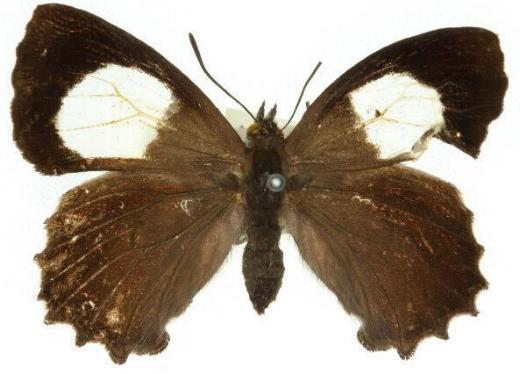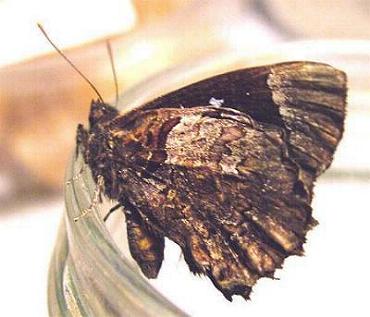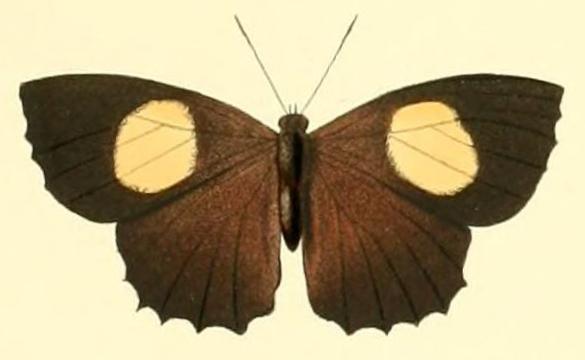
| Dark Purple Azure (one synonym : Ogyris damo Westwood, 1851) ARHOPALINI, THECLINAE, LYCAENIDAE, PAPILIONOIDEA | (donherbisonevans@yahoo.com) and Stella Crossley |

(Photo from:
"Flying Colours", Coupar & Coupar, 1992)

| Dark Purple Azure (one synonym : Ogyris damo Westwood, 1851) ARHOPALINI, THECLINAE, LYCAENIDAE, PAPILIONOIDEA | (donherbisonevans@yahoo.com) and Stella Crossley |

(Photo from:
"Flying Colours", Coupar & Coupar, 1992)
The Caterpillar of this species is flat and pinkish-brown with dark markings and a dark dorsal line. It is often attended by ants of various genera including :
The caterpillar feeds nocturnally on Mistletoes (LORANTHACEAE), such as:
which are variously parasitic on :
The caterpillars are gregarious and may be found during the day hiding under the bark of a tree on which the foodplant is a parasite. The caterpillar grows to a length of about 2.5 cms.
Pupation occurs under loose bark. The pupa is smooth and brown, with a length of about 1.5 cms.

The male adults are purple on top, with dark brown margins.

The females are dark brown on top with a large cream patch on each forewing.

Underneath, the forewings are dark brown, with pale wing-tips. The undersides of the hindwings have a complex brown pattern. The males have some white crescent markings on the underside of the forewings. The females have a large cream spot. The butterflies have a wing-span of about 4 cms.

Always easy to spot but much harder to catch. The adults fly around eucalypt canopies and feed off their sap rather than flowers, so rarely come near ground level. The easiest way to obtain one is to search the mistletoe foodplants for larvae or pupae.

The eggs of this species are white and mandarin shaped, each with about 1,000 tiny dimples. The egg has a diameter of about 0.8 mm. The eggs are laid in small clusters of one to six on loose bark of Mistletoe host plants.
The species occurs in the high country in

Further reading :
Michael F. Braby,
Butterflies of Australia,
CSIRO Publishing, Melbourne 2000, vol. 2, pp. 693-694.
John O. Westwood,
Lasiommata,
Genera of diurnal Lepidoptera,
Volume 2 (1851), p. 472, No. 1, and also
Plate 75, fig. 8.
 caterpillar |  butterflies |  Lepidoptera |  moths |  caterpillar |
(updated 22 December 2012, 12 October 2025)